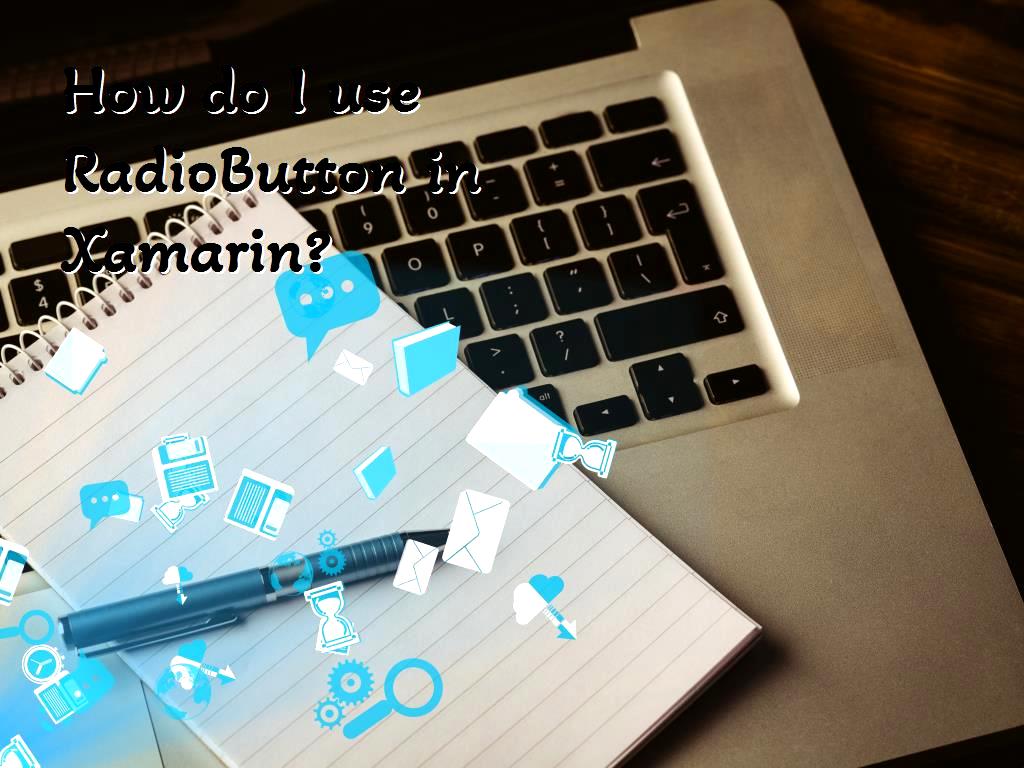How do I use RadioButton in Xamarin?
5 minute(s) read | Published on: Oct 04, 2021 Updated on: Dec 14, 2021 |

What features can RadioButton control define?
- Content: It is worth noting that the radio button can display the Content of the option, a string, view, or object.
- IsChecked: This feature is of bool type, with two outputs, yes or no. This feature can be used to check what is checked. Of course, the default value of this feature is also false.
- GroupName: This feature is of type string and can be used to specify RadioButton control names. The default value for this property is also null.
- Value: This attribute can be of object type and can be used to define its value.
- BorderColor: This property is of type Color and should be used to specify the color of the border stroke.
- BorderWidth: This feature is double and can be used to specify the width of its margin.
- CharacterSpacing: This feature is also of double type and can be used to specify the distance between the characters of the displayed text.
- CornerRadius: This is an int-type property that can be used to specify its radius.
- FontAttributes: This feature is of the FontAttributes type and can be used to specify the style of the text.
- FontFamily: This feature is of type string and can be used to specify the font family.
- FontSize: This feature is the double type and can specify the font size.
- TextColor: This property is of the Color type, which is used to specify the color of the displayed text.
- TextTransform: This feature is of type TextTransform and can specify the coverage of any displayed text.
All these features for it can be supported by BindableProperty to select one of several options in the developed applications( in Czech: vyvinuté aplikace ).
The RadioButton control can define an event such as CheckedChanged that can be activated when the IsChecked attribute is changed.
The CheckedChangedEventArgs object has a CheckedChanged event that even has a value property.
In addition, the RadioButtonGroup class can also do RadioButton grouping. This class can specify the following features:
- GroupName attribute, which is of type string and can be used to specify the group name in Layout -View-.
- The selectedValue attribute is an object type. This feature can show the RadioButton value in the Layout -View- group.
How can we determine the appearance of RadioButton?
When using RadioButton.Content and assigning a string to that attribute, is displayed on each platform. And can display horizontally next to the radio button circle.
When allocating View to RadioButton.Content can be displayed on all supported operating systems.
How to display text-based Content?
It can display text when assigning a string to Content:
We told you that RadioButton can be implicitly grouped in the main compartment in this example.
How to display custom content?
It should be noted that in UWP and iOS, it can display the desired Content:
In this example, RadioButton objects can be implicitly grouped inside a compartment in the main group.
How can we associate values with them?
It should be noted that each RadioButton has a property called Value that can set a unique value for the connection to the button. This makes the Content of it different from its Value. Below is the code that can display its objects in the Content and Value settings:
In the example, we told you that each of the RadioButtons has an image, the image as Content.

How do groups work?
1- They can be placed in the main container, known as an implicit grouping.
2- The GroupName attribute for each radio button can be set to the same value. This is also the explicit grouping.
3- If we also set the RadioButtonGroup.GroupName settings on the parent container can set the GroupName attribute of each of the RadioButtons. This is also the explicit grouping.
Explicit grouping with the GroupName feature
The following is an example that shows explicit grouping with the GroupName attribute:
With the RadioButtonGroup.GroupName attribute, the explicit grouping of the RadioButtonGroup class can define a GroupName attribute of type string.
It can have two modes:
1- Checked
2- Unchecked
IsChecked is correct when they are checked. The IsChecked attribute is incorrect when the radio button is not checked.
We can set the IsChecked property to false rather than delete them.
How can we respond to events?
When Checking IsChecked, the CheckedChanged event turns on. To be able to respond to events, we can do the following:
In this example, the RadioButtonGroup.GroupName attribute is set by GroupName.
Radio button and its visual modes
It is worth noting that the radio button has Checked and Unchecked visual modes.
In the example, we gave you, the implicit style targets objects that belong to RadioButton. VisualState Checked also determines whether the radio button is checked, and the TextColor feature is displayed in green. The TextColor feature is also displayed in red if it is not checked.
To define the visual structure of the radio button, we need to create a ControlTemplate. Like the following:
Below is the code that can define ControlTemplate in an implicit style:
.jpg)
In the example we have provided for you, each visual structure defined for each the visual structure in ControlTemplate replaces it.
In this tutorial, we taught you how to
create a radio button to select an option from a set of options. You can go through all the steps listed above until you have a radio button with the desired feature and appearance.
DotNek Android development services